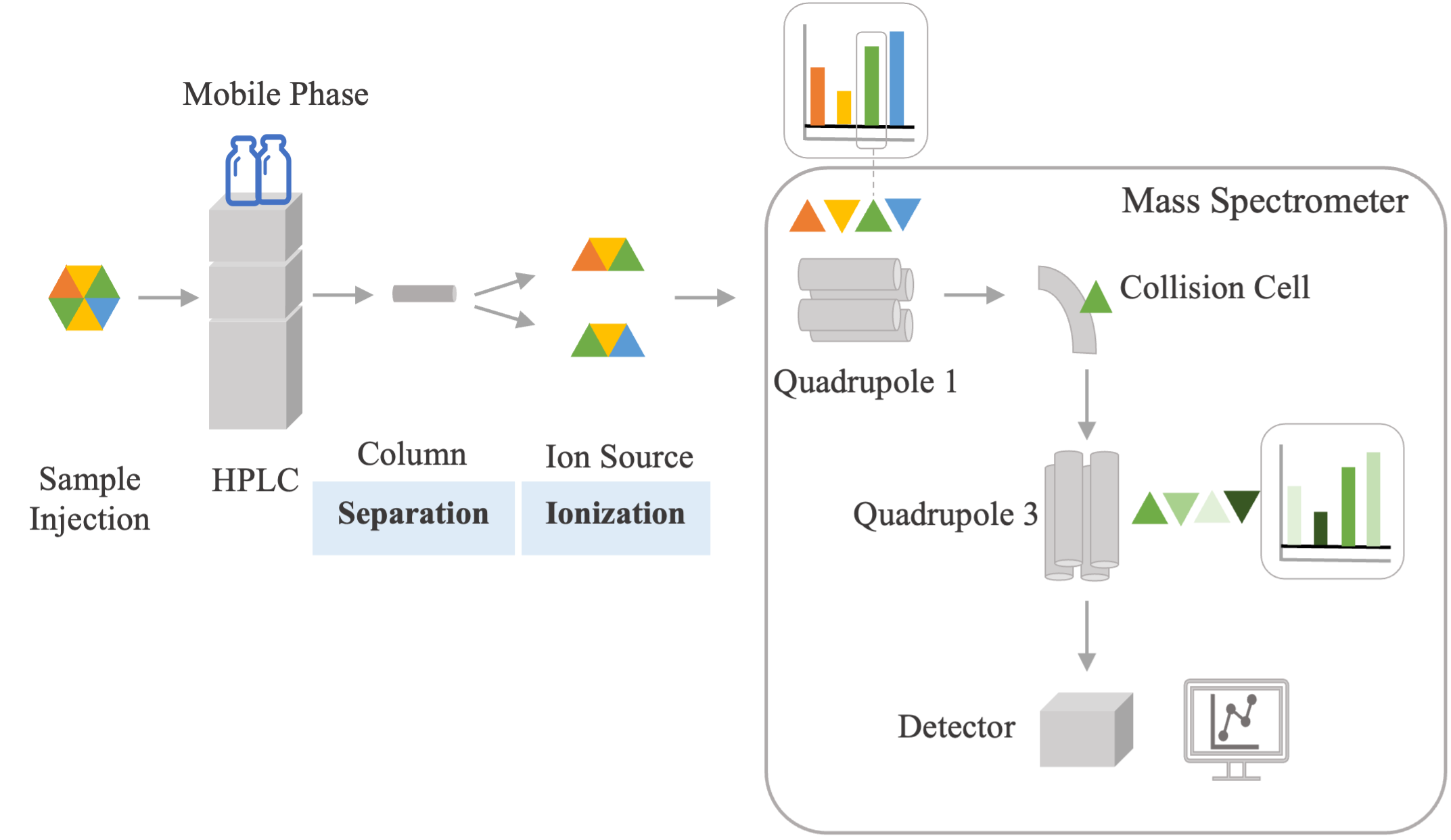The most common problems with LC-MS/MS analysis include a loss of sensitivity, decreased peak separation, increased peak splitting, or leaking or clogging of tubing. Another issue faced is the carry-over of analytes from one sample to the next. The maintenance of these highly sensitive instruments is critically important for acceptable sensitivity and accurate results. More detailed quality assurance and quality control guidelines will be outlined further on; here, the upkeep of the instruments alone is discussed.
Preventative maintenance Many steps are taken daily to maintain the instruments and prevent degradation of the assay or damage to the physical instrumentation and ensure maximum performance. Changing mobile phase solvents regularly and “purging” the instruments so there is no air in the lines eliminates shifting of analyte peaks and maintains accuracy. Monitoring retention times and peak areas can indicate when steps should be taken to improve the quality of the results, such as the following.
Changing the column The analytical column used for the initial separation of samples before entering the mass spectrometer will erode over time and lose its ability to separate analytes successfully. Simply changing the column after every 1000 injections improves separation and sensitivity.
Cleaning the QJet The QJet is responsible for guiding ions in a thin stream from the ionization source to the mass spectrometer in an efficient way. Over time the QJet requires cleaning to ensure ions are able to pass through without issues. One piece in front of the QJet called the curtain plate is cleaned regularly as a preventative measure. Cleaning the QJet and curtain plate improves the sensitivity of the mass spectrometry detector.
Replacement of parts By simply replacing pieces of the LC-MS/MS system, issues such as loss of sensitivity or increased carry-over could be resolved. The injection needle and needle seat, tubing, valves, and more should be replaced before issues arise. Tubing and valves that liquid samples pass through will become clogged or erode over time and are replaced on a regular basis to avoid any problems.
Expired analytes Ensuring the quality of analytes used as reference materials and in the internal standards, including that they are used before their expiration dates is critical for calibrators, quality control samples, and for the accurate quantification of analytes in patient samples. Internal standards are important for quantitative data analysis to correct variations and ensure repeatability between samples.8 In order to determine the unknown concentration of an analyte in a sample, a known concentration in the internal standard is required. As analytes expire, the peaks detected will lose intensity and split, causing questionable accuracy of patient sample results, deeming them unacceptable.
